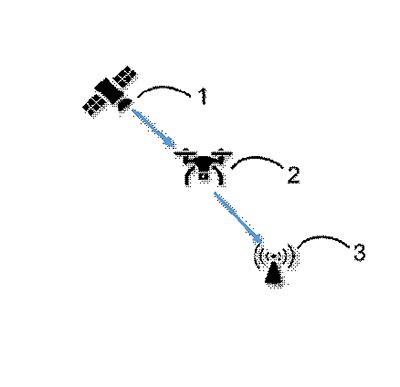GUAPO - GNSS based Unmanned Aeriel Vehicles monitoring system using Passive Observations
Area of expertise: Sensor & analysis technologies
The team
- Carmine Clemente
- Domenico Gaglione
- Christos Ilioudis
- John Soraghan
Professional large Unmanned Aerial Vehicles (UAV) are known to be used in several military and civilian applications, ie security, search and rescue, monitoring, disaster management.
Small UAVs have also recently attracted strong interest, especially among hobbyists and amateurs, due to their accessibility and low cost.
However, the lack of a clear regulation poses a real safety problem, as recently demonstrated by the crash between a small drone and a landing aircraft.
Moreover, small UAVs may end up used in unconventional ways. For example drones could be deliberately used to interfere with common airport operations or their small size exploited to evade conventional radar systems and border surveillance systems .
Passive Bistatic Radar
The Sensor Signal Processing & Security (SSP&S) Laboratories at the University of Strathclyde developed the concept of a Passive Bistatic Radar (PBR) system based on Global Navigation Satellite Systems (GNSS) for small UAVs' detection.
A PBR exploits the signal emitted by transmitters of opportunity to perform common radar tasks, such as target detection, speed estimation, classification, tracking, etc., with the advantage of stealth operation mode and low power consumption (in agreement with the low-SWaP paradigm).
The working principle of the PBR is depicted in Figure 1.

Figure 1
One of the GNSSs satellites emitting a navigation signal is marked with 1, the target is marked with 2 and the receiver is marked by 3.
The receiver performs the selection of the specific GNSS illuminator by exploiting prior information about the satellite identification code (e.g. Psuedo Random Noise (PRN) code of the GPS constellation), the geographic area of deployment of the system and the expected set of satellites whose signal can be received by the receiver in a given instant.
In this way the GNSS illuminator that will maximize the detection and classification performance can be dynamically selected. The GNSS illuminator selection stage implies a cross-correlation with a local replica of the GNSS satellite identification sequence that allows the interference from other GNSS illuminators to be mitigated thus enhancing the received signal to noise ratio.
Improved detection of Unmanned Aeriel Vehicles
The detection operation of the passive bistatic radar is based on the declaration of the presence of a target when the power received by the GNSS satellite drops rapidly due to the interaction of a UAV. As the target crosses the line of sight between 1 and 3 the power of the received signal drops, due to the shadow effect of the target’s silhouette. The drop of power can be of significant, several dBs and can be detected with minimal processing.
Following the detection stage the received signal can be further processed. For example, the shape of the power drop at the receiver due to the shadowing effect provides information useful for performing target classification. In this way the target can be classified and UAVs can be discriminated from other targets such as birds and larger aircrafts. Additionally, the Doppler modulation of the received signal in back scattering can be used to identify the rotating speed of the rotors and hence discriminate UAVs from birds and airplanes.
The system is fully scalable and can be integrated with other systems. The passive nature of the process means that it can be deployed without the overheard of significant infrastructure.